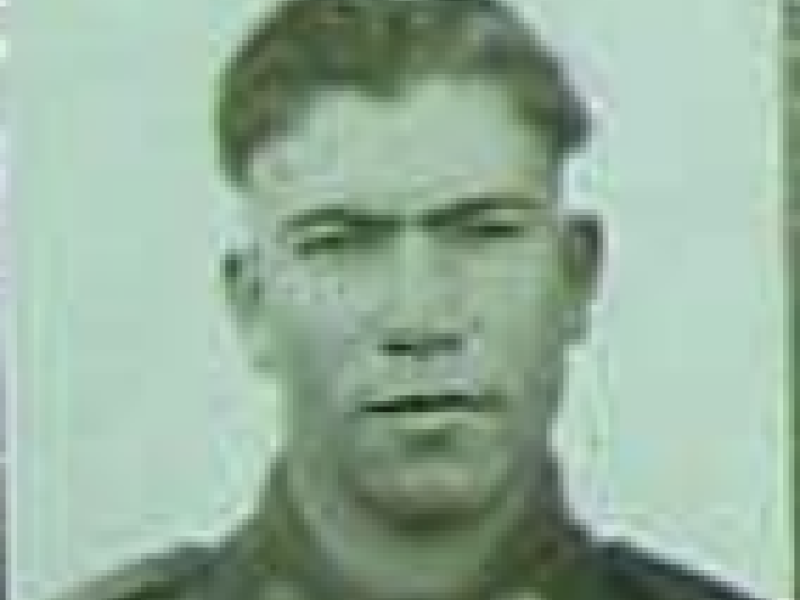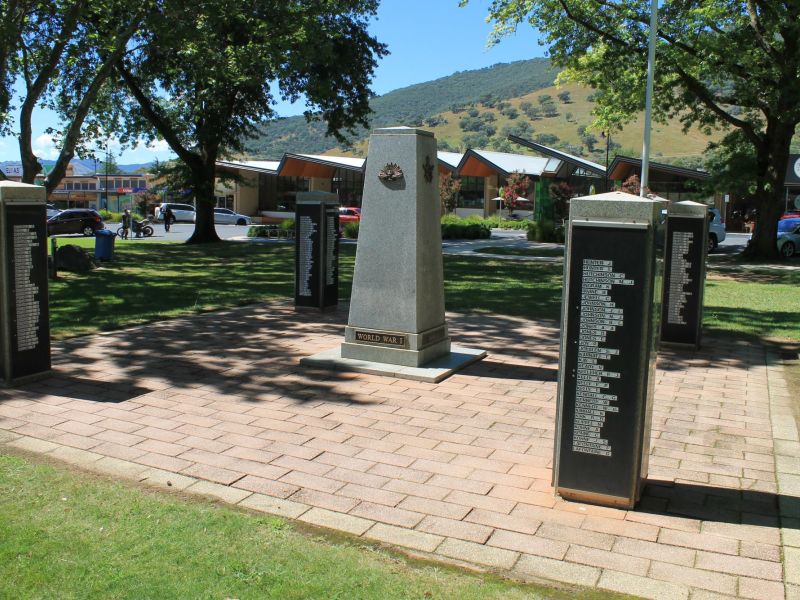Alan Lawrence Hempel
Alan was born in Albury on the 14th of August, 1921. He was the oldest of eight children for Gustav Adolph and Emily (née Smith) Hempel. Looking at Australian Electoral Rolls it appears that the Hempel family moved from the Upper Murray back to Melbourne not long after Alan’s birth. Information states that Gustav’s profession was a “collector” living in South Yarra and then, from 1928, he was a constable in the Victorian Police Force.
Alan enlisted on the 3rd of June, 1940, at Footscray, Victoria. At the time he was a single, 18 year-old, tractor driver living at 4 Tongue Street, Seddon. He gave his mother as his next of kin who, at that time, was living at Gundowing, via Wodonga. Alan, Army Number VX23993, was first posted to the No. 1 Training Depot at Balcombe on the Mornington Peninsula. After a month he was transferred to the 2/22nd Battalion, which was stationed at Puckapunyal, near Seymour, in central Victoria. Training continued for another three weeks. During the period of the 7th of August to the 21st of August he moved to the 2/40th Battalion, then the 2/22, and finally the 2/24th Battalion based at Wangaratta. The 2/24th battalion came to be known as “Wangaratta’s Own”.
From 2359 hours on the 15th of September to 0945 hours the following day he went AWOL (Absent Without Leave). For this brief moment of freedom he was “awarded” a forfeit of one day’s pay. The 2/24th was part of the 26th Brigade, along with the 2/23rd and 2/48th Battalions. The brigade was initially part of the 7th Division, but in early 1941 it became part of the 9th Division. This brigade moved from Wangaratta to complete its training at Bonegilla.
The 2/24th Battalion left Wodonga in two trains, at 0435 hours, on the 16th of November. A short breakfast at Seymour consisted of pies and coffee. Arriving at the Port of Melbourne they embarked on HT Strathmore, along with the 2/8th Field Regiment, the 26th Brigade Headquarters and the 2/23rd Battalion. The Strathmore left the pier at 1430 hours and anchored off Dromana two hours later. It wasn’t until 1015 hours that she passed through the Heads. Out in Bass Strait the ship joined two other transports, HMTs Orion and Batory. HMS Adelaide, a light cruiser, escorted them for a short period of time before HMS Perth took over. The following day the convoy was joined by HMT Stratheden from Adelaide.
It took three days for the convoy to reach Fremantle and on the 22nd of November troops from the Strathmore were given shore leave until 2358 hours on the 22nd. Two weeks later the convoy dropped anchor off Colombo and troops were given a short period of shore leave to stretch their legs. On the 16th of December HMTs Orion, Strathmore and Stratheden entered the southern end of the Suez Canal. Ten hours later the Strathmore moored at Kantara and troops disembarked at 0700 hours the following day.
The battalion settled into their new camp at Dirma in Palestine. Training consisted of brushing up on drill and weapons. Christmas day began with a Brigade parade for carol singing and an address by Brigadier Tovell and Padre Conlan. Sport was high on the agenda with intercompany cricket and football matches.
Early in the new year the entire 26th Brigade, of which the 2/24th was part, along with the rest of the 9th Division, moved into Cyrenaica to complete its training. Despite the early successes of the British offensive at the start of the year, the counter-attack of the German Africa Korps and Italian Forces pushed the 9th Division back to Tobruk. The withdraw became known as the “Benghazi Handicap”. On the 10th of April the 2/24th entered Tobruk and would remain there for the next eight months.
The period between the 30th of April to the 2nd of May became known by the battalion as”the May Show”. It was a time of both triumph and tragedy. Triumph as the Africa Korps received a major setback, so severe that it was forced to go over to the defensive for a considerable period of time. It became known as a tragedy due to the number of members of the battalion that were lost, both killed in action and also taken prisoner. Alan was a member of No. 16 Platoon of D Company and fought alongside a close friend, Corporal Dick McLeish. The action is described by Dick in the 2/24th Official History.
“When the fog lifted, we saw about thirty tanks lined up half a mile from our post inside the wire. They then dispersed - several going to each of the nearby posts, with infantry following them. We fired on the infantry and they went to ground but the tanks kept on lumbering on. Their machine-guns kept our heads down and their cannon blasted away the parapets round our fire positions. A lot of our chaps were wounded, but we kept firing at the infantry whenever we got the chance. We put one tank out of action with our anti-tank rifle, but it was useless against the big fellows. We threw hand grenades at them, and they just bounced off. We didn’t have any Molotov cocktails or sticky bombs which might have stopped them.”
The German attack was too powerful for the outpost and they surrendered around 1 p.m. Alan and Dick were taken into captivity. Over a month later, on the 11th of June Alan and Dick walked back into the 2/24th’s lines in Tobruk. The two had escaped while prisoners at Derna Aerodrome and then walked back to Tobruk along the coast road. Their return was described as a “remarkable feat of courage and endurance.” They were the only men captured on the first of May who were able to successfully escape their captors.
In early June the battalion moved from the Blue Line to occupy the Red Line in the Sidi Daud sector of the Tobruk fortress. On the 4th of July the battalion sent out the usual night patrols. There was intermittent shelling of the D Company’s position and casualties were inflicted. One of those was Alan. He was taken to the casualty clearing station, but died of his wounds. Alan was buried in Tobruk War cemetery the following day.
He is remembered on the Australian War Memorial Roll of Honour and the Tallangatta RSL War Memorial. For his service he was awarded the 1939-45 Star, the Africa Star, the Defence Medal, the War Medal 1939-1945 and the Australian Service Medal 1939-1945.

 Stephen Learmonth
Stephen Learmonth